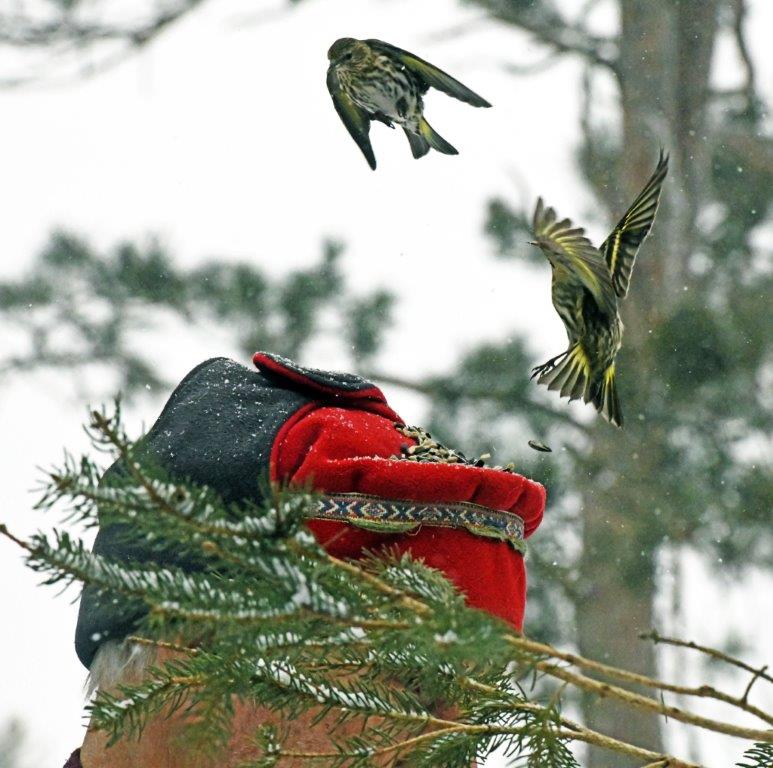Our Intrepid Sled-Dog Racer and a Hungry Bird Contest - UPDATE February 27, 2023
Dr. Rogers with pine siskins

Scott Edgett at the Wolftrack Classic
Scott Edgett at the Wolftrack Classic

Yesterday, with the support of his Bear Center followers, our intrepid NABC director, Scott Edgett, finished 8th out of 19 mushers in the 52-mile Wolf Track Classic sled-dog race, his highest finish. Scott has spent a lot of time running his dogs to get them (and him) in shape, and he said they were still “flying” as they crossed the finish line. There, he expressed his appreciation for the strong support he felt from his online followers. Scott Edgett at the BearGrease
Scott Edgett at the BearGrease

The picture shows him and his dog team approaching the finish line in this last race this year. Way to go Scott. Today, he is back running the North American Bear Center happy with his dogs and his finish.
However, a couple weeks ago he was even more intrepid running the 120-mile Beargrease race at 28° (F) BELOW zero. The picture of his frosted eyebrows and eyelashes is what onlookers saw when he took off his sunglasses at the finish line. Scott, I’m glad you weren’t frost-bitten, and I now can see why not everyone is a sled-dog racer.
Here at the WRI today, it was a different kind of excitement. Snow had covered the food we put out. The birds were acting hungry, and it was time to learn something. With the temperature around 20° (F) ABOVE zero with no wind, I could quietly stand outside and see which kind of hungry bird would best overcome its fear to eat sunflower seed hearts from my hand, shoulder, and hat. The four contestants were black-capped chickadees, red-breasted nuthatches, American goldfinches, and their close cousin pine siskins. I had not fed any birds out of my hand this winter.
Dr. Rogers with pine siskins
Dr. Rogers with pine siskins

Chickadees were the first on the scene. Eight of them gathered on branches within about three feet of me but none were accustomed to me. Within ten minutes, though, three of them dared to quickly and cautiously snatch seeds from my hand and fly off to peck them into little pieces. Three red-breasted nuthatches came close but weren’t quite brave enough.
Then the big action started. A flock of maybe 40+ goldfinches came close with a dozen pine siskins close behind, causing the chickadees and nuthatches to back off. The siskins took over, showing how much more trusting, competitive, and aggressive they are than the goldfinches. Siskins almost immediately sat calmly and confidently on my hand for minutes at a time eating seed after seed, facing off competitors with quick moves toward them with beaks open. The siskins also contested with each other as is shown in the hat picture. However, goldfinches that quickly moved only a few inches away from aggressive siskins sat watching for opportunities to move in nearly to touching distance when the siskin faced away and was occupied by seeds. The picture shows two goldfinches waiting for such opportunities as siskins (streaked with brown) calmly eat their fill. A third goldfinch is placidly eating alone where seeds had trickled down from my shoulder to a pocket flap.
I ended the experiment by putting out seeds everywhere as a thank you for letting me see their behaviors close up.
Thank you for all you do,
Lynn Rogers, Biologist, Wildlife Research Institute and North American Bear Center

 Author
Topic: Jewel and her cubs (Read 2258547 times)
Author
Topic: Jewel and her cubs (Read 2258547 times)
